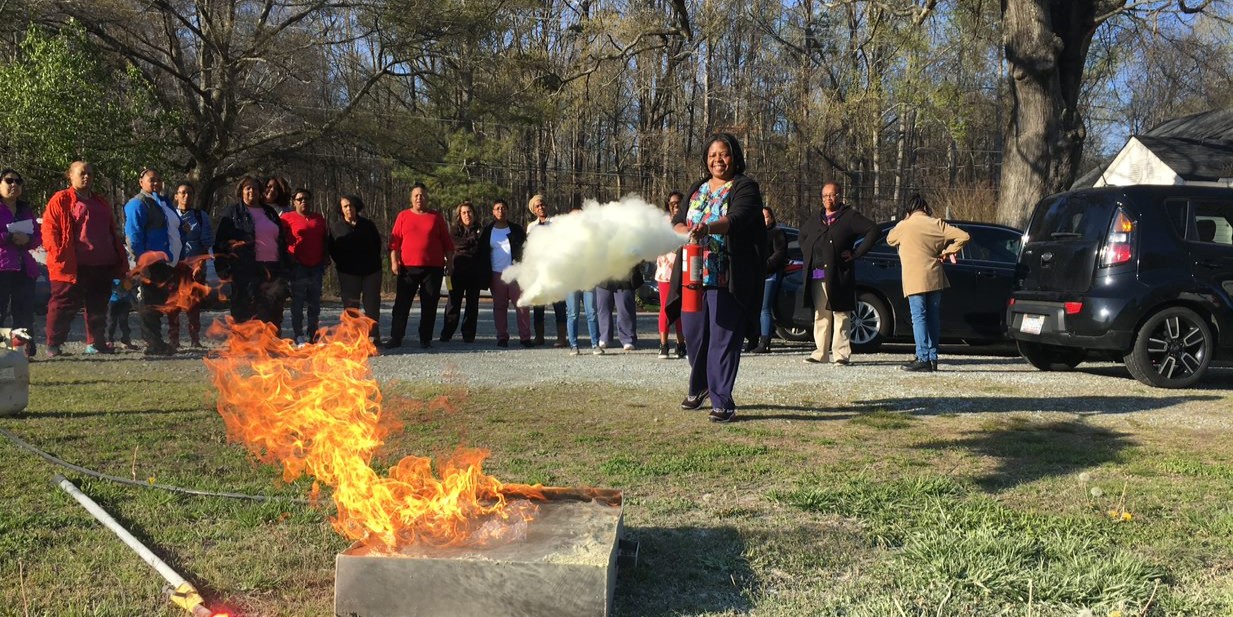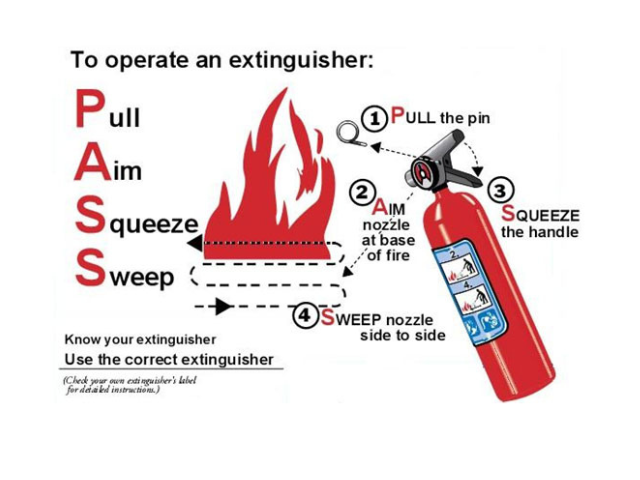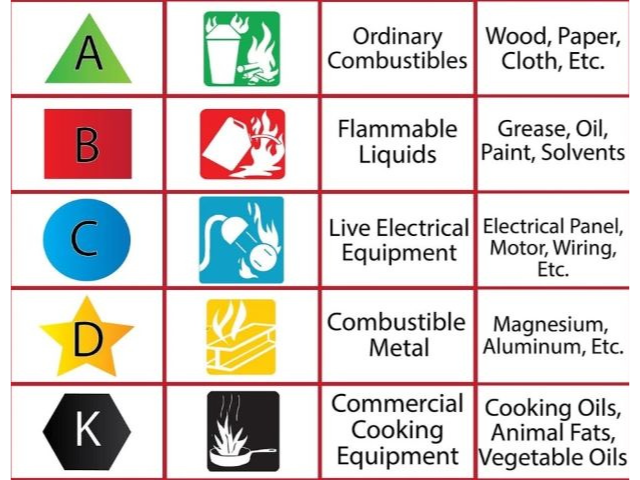Fire Extinguishers

About Fire Extinguishers
Because most fires occur in homes, it is a great idea to purchase a fire extinguisher for your house to help protect your family and property. An ABC rated extinguisher is the most common fire extinguisher and will extinguish most fires that occur in your home. Fire extinguishers should be easily accessible and mounted in visible, easy to reach locations. They should be located near exits and near areas of greater risk such as kitchens and garages. Additionally, it is beneficial to have one extinguisher on each level of your home for quick access.
Using a fire extinguisher
To use a fire extinguisher, remember the PASS Method explained here. This word will help you remember how to use an extinguisher in case of an emergency.

Care and Maintenance
Fire extinguishers require routine maintenance so you should check your fire extinguisher periodically. You want to ensure that the needle on the gauge is within the green zone of the gauge indicating that it is pressurized. You should have your fire extinguisher serviced and inspected annually to ensure that it will operate when needed or consider replacing it.

Types of Fire Extinguishers
An ABC rated fire extinguisher is designed to extinguish the most common hazards that you will find in your home. Take a look at the pictogram for examples of these hazards. Class ABC fire extinguishers are not rated to extinguish cooking oil or metal fires. For fires involving cooking oils it is recommended to cover the fire with a lid and turn off the heat. If you don’t have a lid nearby you can also use salt to smother the flames.
When to fight a fire
In the event of a fire, you should first activate the fire alarm and dial 9-1-1. Once the fire department has been notified through the emergency notification system, quickly gauge the size of the fire. If it seems small and contained to one area, locate your fire extinguisher. Be sure to always stay between the fire and your exit (in case you need to leave immediately) and follow the PASS method provided above. If the fire continues to burn after discharging your entire extinguisher, leave the building and wait for the fire department to arrive.
To find more great information about fire extinguishers provided by the National Fire Protection Association please use this link Fire extinguishers | NFPA


